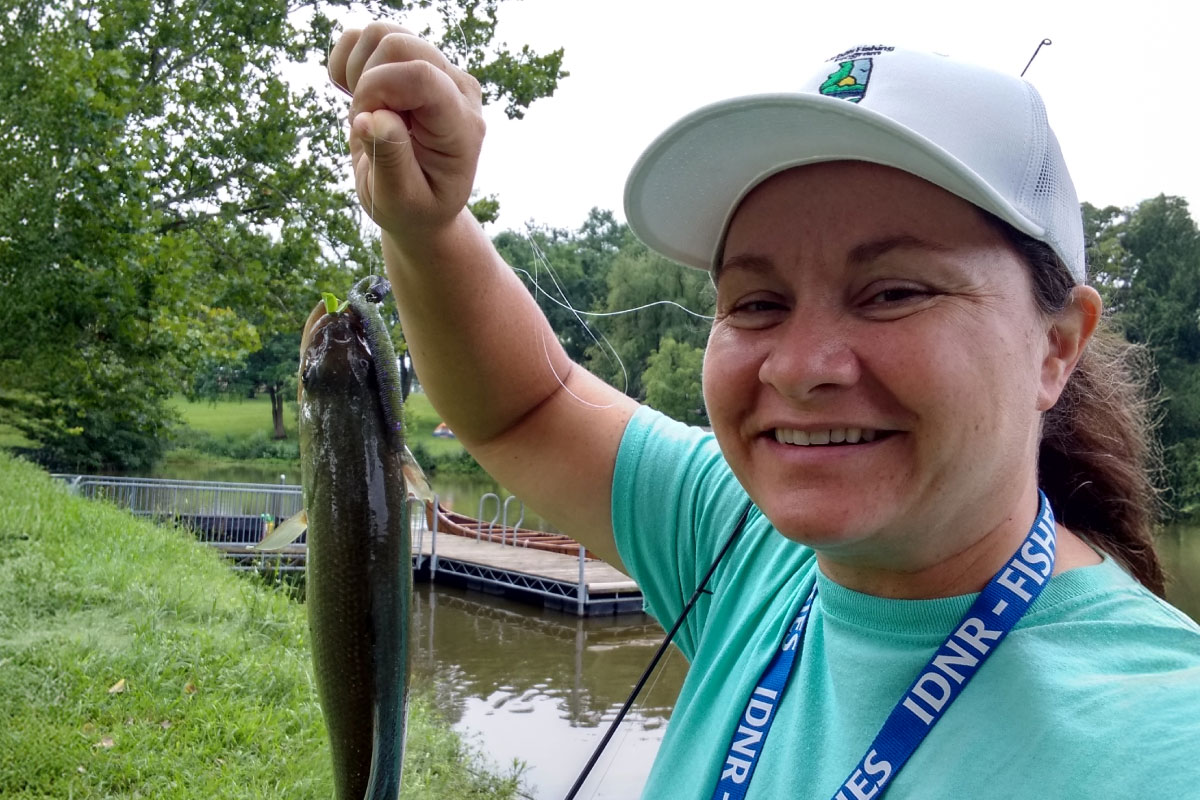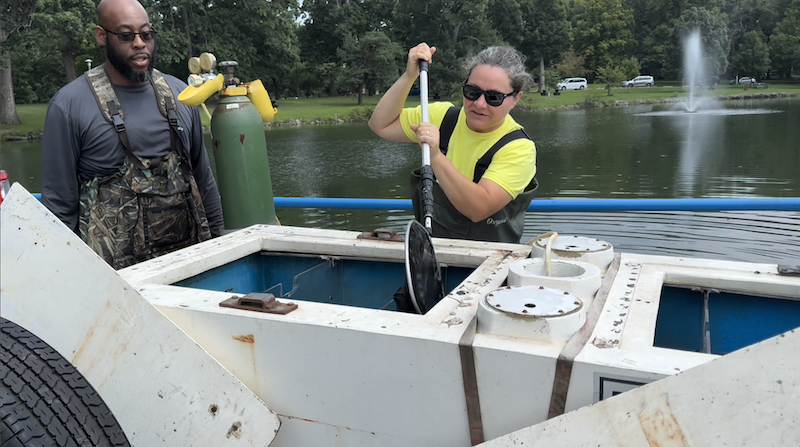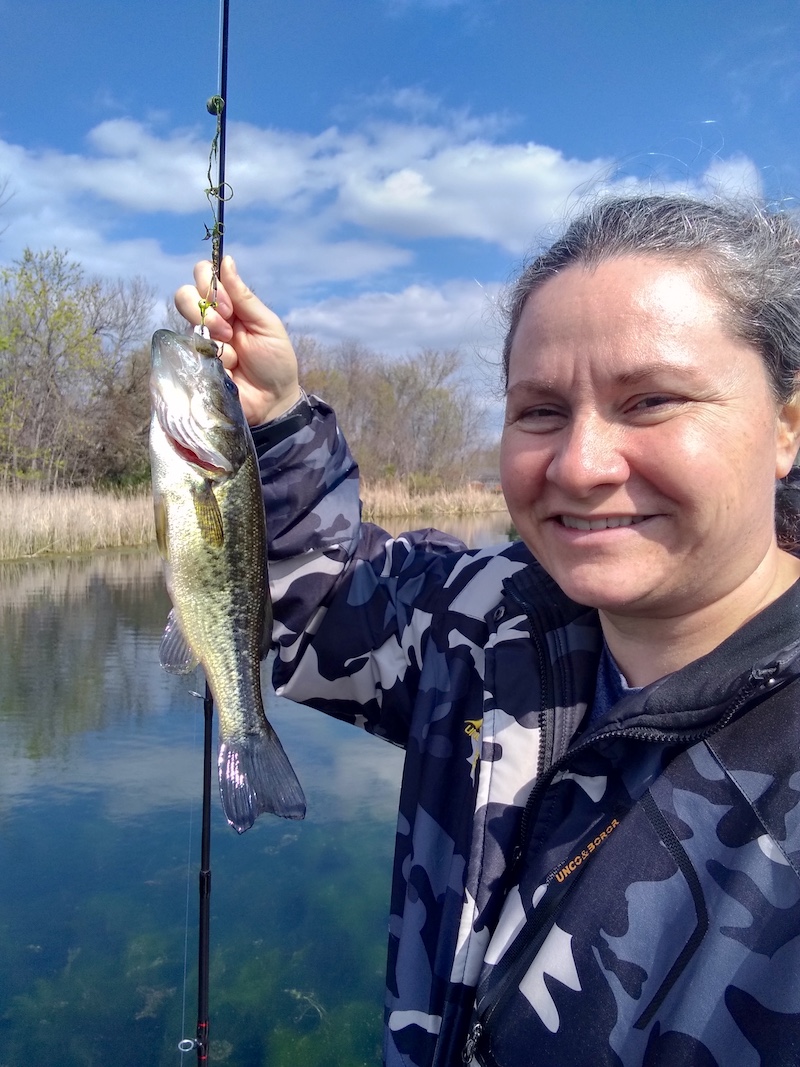
Photo by Takouhie Jensen.



Photo by Takouhie Jensen.
“Hey, Mom! Are you going fishing? Can I come watch?”
When Takouhie Jensen, her husband and her six children moved to a property with a pond in 2020 her attempts at fishing were often thwarted and she happily spent more time teaching and watching the action than fishing. In 2024 she was able to put her experience teaching youth to fish when she was hired as a Conservation Education Representative with the Illinois Department Natural Resources’ (IDNR) Division of Fisheries Urban and Community Fishing Program to conduct fishing clinics throughout Sangamon County.

Established in Chicago in 1985, the Urban and Community Fishing Program teaches people of all ages to fish, and appreciate natural resources, through local fishing opportunities. Four full-time program coordinators provide year-round in-classroom instruction and waterside clinics and are during the summer months are joined by nearly two dozen Conservation Education Representatives who facilitate fishing experiences and conservation programs throughout Illinois.
Jensen worked with Van Grissom, the central Illinois Regional Urban Fishing Program Coordinator and valued his experiences and gracious nature as a teacher.
Jensen’s advice for anyone wanting to learn to fish—or to return to fishing—is to figure out what is stopping you and find a way around it. Break down those barriers. Sign up for a fishing clinic. If you don’t like touching fish or worms, then bring somebody who doesn’t mind touching fish and worms.
Jensen enthused that those people truly do exist.
“I took my husband fishing and taught him a few things I had learned about fishing, and in return he handled the stuff that I find most difficult,” she explained. “Fair trade!”
“Most of my fishing was trial and error until I got my job with Urban and Community Fishing Program,” Jensen explained. “Prior to working for IDNR, I tried watching fishing videos but quickly learned that the best teacher is the person fishing a body of water as they have studied that fish population. The anglers on video don’t know your body of water and what the fish have learned to avoid. I think that’s one of the most beautiful things about fishing is that it builds community when you really go all in. In my experience, anglers have always been gracious with sharing what they know.”

Jensen grew up in Orange County in southern California where her mother took Jensen and her nine siblings to a local fish farm. After her mother paid for one half hour of fishing, with one rod to be shared among the 10 siblings, Jensen’s first experience lasted only minutes. As one of the youngest siblings, she recalls how upset her 5-year-old self was when an older brother grabbed the rod because he didn’t think she could catch a fish.
“Happily, I’ve been able to prove him wrong time after time since then,” she bragged.
After mentoring around 700 youngsters who attended urban fishing clinics led by Jensen in 2024, her advice for introducing children to fish is to start where they are comfortable.
Jensen recounts two teenage boys who attended a clinic, and despite her every attempt, neither boy caught a single fish. But their group returned a couple of weeks later and the boys made happy memories.
“One of the boys leaned his rod against the sidewalk rail, asking for my help to remove a small sunfish he had caught,” Jenson recalled.
“Walked back with him I noticed that the line was taut and almost to the middle of the pond.”
He had not locked the line and as he picked up the rod and started to reel in the fish the rod bent. Something big was at the end of the line.
“When the line was close enough, I grabbed it and we pulled up a massive bass about the length of my forearm and hand,” Jensen said.
“That bass had swallowed the sunfish. I cut the line, let the fish go and we celebrated that bass—which was the only one caught all summer.”
It didn’t matter that the monster bass was an accident. It was a memorable fishing experience.
By the end of the day the other young man made his own memories as he reeled in his first fish, a sunfish.
It was a day of being in nature and fishing, with happy smiles and memories made to last life times.
As the mother of six children who is attending graduate school to be a marriage counselor, Jensen’s “me time” is sorely limited. So why take the time to fish?
“I honestly think hitting the pond when I get home is my way to decompress,” she explained. “There’s just something about fishing. It is a mix of mystery, skill, peace, nature and surprise. Those are all parts of the fishing experience.”
“Are you going fishing? Can I come?” Elicited by a youngster, those simple questions will launch a lifetime of fishing memories.
Kathy Andrews Wright retired from the Illinois Department of Natural Resources where she was editor of OutdoorIllinois magazine. She is currently the editor of OutdoorIllinois Journal.
Submit a question for the author